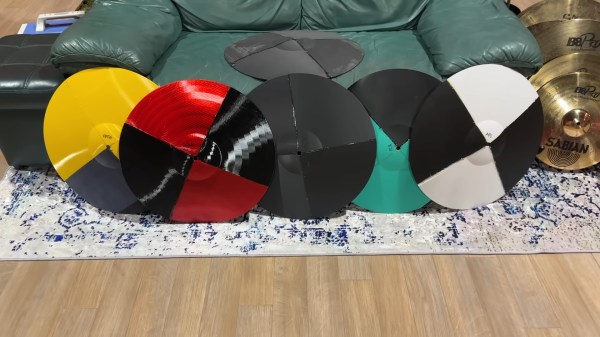We’re big believers in 3D printing here at Hackaday, but it’s important to recognize that there are plenty of applications where additive manufacturing (at least, from a desktop machine) just isn’t suitable. But that doesn’t mean we don’t want to see what happens if you try. For example, [The Drum Thing] wanted to test the limits of 3D printing by printing a set of cymbals.
[The Drum Thing] had a friend design a cymbal in CAD and then the printed quarters were glued together. In the name of science, they produced them in six different materials to compare performance. Each cymbal was played for a short period or until it failed, including some very interesting slow motion camera work showing the vibrations traveling through the cymbals.
As one might expect, bashing “wafer thin” pieces of printed plastic with a wooden drumstick didn’t work out well for most of the cymbals, although the TPU, carbon fiber, and nylon cymbals were did largely survive their time in the limelight. The other cymbals all failed, either shattering, cracking, or failing at the glue joints. Based on the video, it seems the same glue was used for all of the cymbals, so making sure to have a better match between material and adhesive could help with the glue failures.
Maybe future testing can involve playing these cymbals with a quadrotor?
Continue reading “Challenging The Limits Of 3D Printing With Cymbals”










